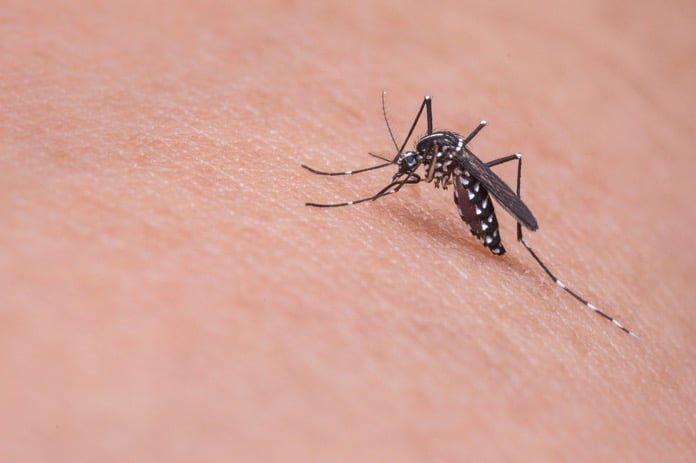A recent study evaluated whether mosquitoes are more attracted to the body odour of people infected with malaria or non-infected individuals.
Malaria is a mosquito-borne infectious disease caused by the parasite Plasmodium. The main malaria-causing species are P. falciparum, P. ovale, P. vivax and P. malariae. The species P. falciparum is generally considered to be the most critical due to its prevalence and the severity of the infection it causes.
Malaria transmission
People usually get malaria after being bitten by an infective mosquito. Only the female Anopheles mosquito can transmit malaria. The mosquito itself must have been infected from previously biting an infected person with malaria.
It is known that parasites such as Plasmodium facilitate transmission from an infected human to the female Anopheles mosquito. Some studies suggest that this parasite increases the attractiveness of the human to the Anopheles mosquitos by modifying the chemicals present in the body odour. By doing this, malaria-infected individuals would produce a body odour that attracts mosquitos more effectively, thus enhancing the spread of the disease.
Skin odour responsible for attractiveness to insects
Some people are more prone to being bitten than others. This is due to the differences in skin odour. The human body odour can be influenced by illnesses, infections, or metabolic conditions.
A recent study published in March 2018, in the Proceedings of the National Academy of Sciences (PNAS) journal, is the first one to investigate the skin chemistry behind this phenomenon. In this multi-centre study, researchers compared skin odour compositions between Plasmodium-infected and parasite-free children in an endemic area in Kenya. Through their study, they aimed to identify and establish the role of compounds associated with malaria infections in human body odour.
The experiment
For the study, they selected 45 children between five and 12 years old. From these, 12 did not have malaria and were used as the control group. They tested the children’s body odour for attractiveness to Anopheles gambiae mosquitos.
They assigned malaria-infected children nylon socks to be worn for 20 hours at two different moments: within 24 hours of anti-malaria treatment (time 1) and 21 days later (time 2). They collected the socks to determine the attractiveness of the odour samples.
To do so, they used two cages. One cage contained the pair of socks collected one day after the anti-malaria treatment, and the other contained a pair of socks from the same child collected 21 days after the anti-malaria treatment). They connected the cages with a tube.
Then, they released 10 female mosquitos in the tube connecting the cages. They gave the mosquitos 15 minutes to choose their direction based on the odour they preferred. Later on, they conducted a series of analyses to identify the most prevalent infection-associated compounds present in the children’s body odour. Moreover, the authors investigated the sensory response of mosquitos’ antennae to malaria odour.
Mosquitos were more attracted to odours collected from infected children
This study shows that mosquitos were more attracted to the odours from the socks of malaria-infected children, which were collected 24 hours after anti-malaria treatment. However, mosquitos could not tell the difference between the two odour samples from parasite-free children. This indicates that infection with Plasmodium is associated with changes in the odour profile that increase attraction to mosquitos.
They also found that 22 body odour compounds from the socks elicited a response from the mosquitos’ antennae. The most common ones were aldehydes, which are chemicals used by insects to locate humans who are infected. There were some differences in the quantities of the aldehydes, but overall, their amounts were significantly higher in malaria-infected children.
Implications for future research
This pioneering study demonstrated that individuals with malaria produce a specific smell that makes them more attractive to mosquitos than those who do not have malaria. Discovering the specific aldehydes that make body odour more attractive to mosquitos can help to improve lures for trapping malaria-infected mosquitos. They can also provide a basis for new and non-invasive diagnostic tools.
Written by Gustavo Caetano, B.Sc., M.Sc.
Reference: Robinson A, Busula AO, Voets MA, Beshir KB, Caulfield J C, Powers S J, Verhulst NO, Winskill P, Muwanguzi J, Birkett MA, Smallegange R C, Masiga D K, Mukabana W R, Sauerwein R W, Sutherland C J, Bousema T, Pickett J A, Takken W, Logan J G, de Boer J G. Plasmodium-associated changes in human odor attract mosquitoes. PNAS. 2018, 1 -10.



